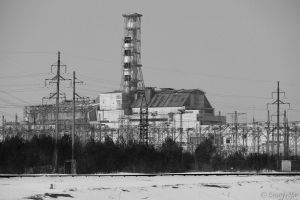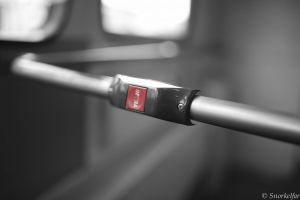During my visits, I have come to love this place, just as the beautiful western archipelago of Sweden. Although I love it dearly, this place is incompatible with human life. In fact, it’s so hostile that not a single person is going to live there for hundreds of years. In the midst of this eerie setting, over which memories of misfortune are scattered, I see a beauty of striking grandeur. I cannot tell if it’s the tranquil atmosphere, or that nature reclaiming grounds lost to humans. As a photographer and documentary filmmaker, the Chernobyl exclusion zone now feels like my second home.
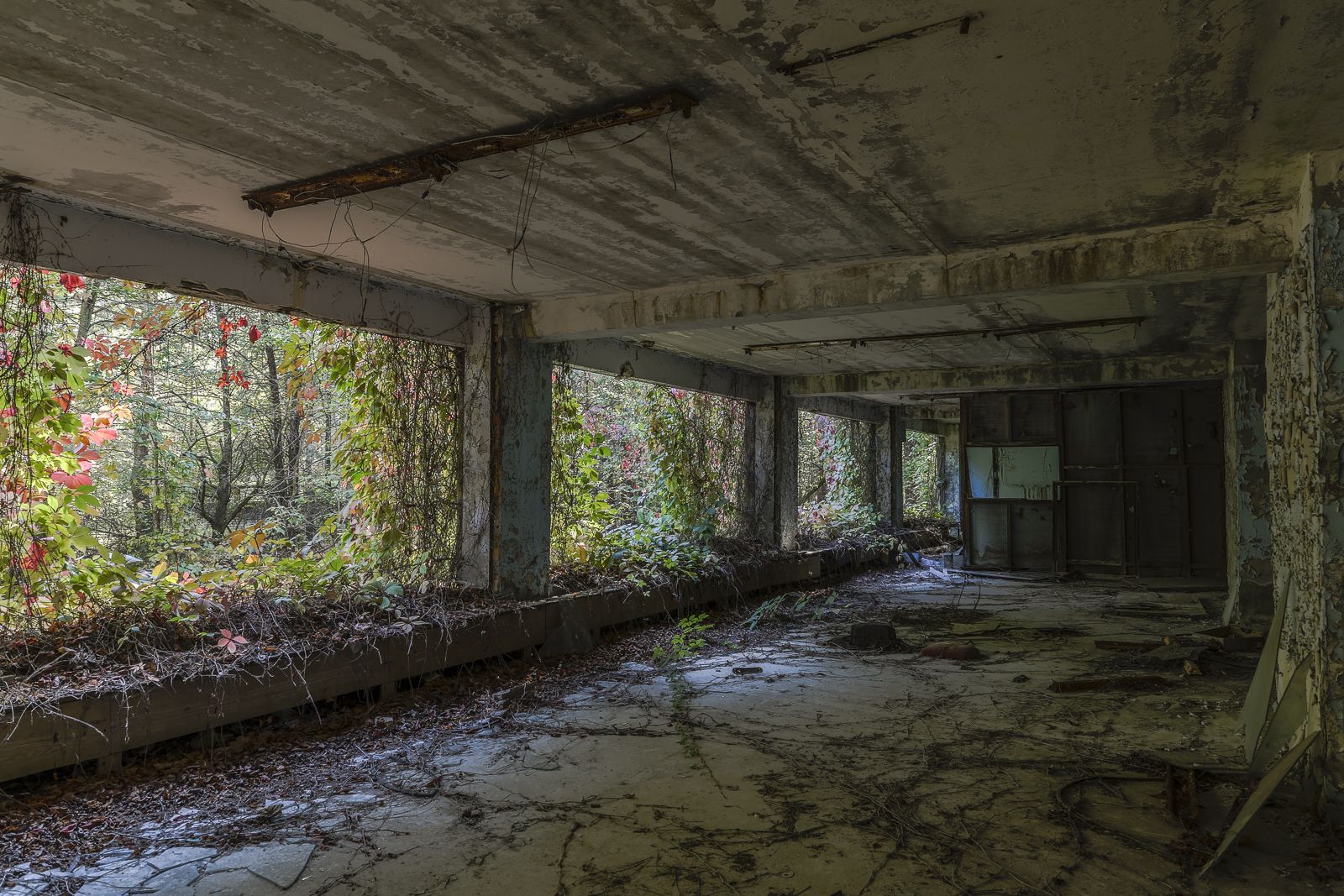
Preparatory
Preparatory work starts several months ahead of the journey and takes more time than the entire trip. I do location scouting using existing material, together with maps and a celestial calendar. Thanks to modern tools, apps can now do the work of trigonometry calculations for me and show me position and angle of the sun and moon, and even the length of shadows at an exact time and place. I can test different locations to film a sunset or where to get the best angle of the sunrise with a specific foreground. I usually include a list of places I digitally scouted when filling out the paper work to get the necessary permits.
Packing
Carrying all equipment, is just one of the many challenges of working in the Zone; I need to be able to switch lenses and batteries without putting things on the ground. Equally essential as lenses, batteries and memory cards is my sixth sense. It’s a small yellow device that hangs from my belt. The Geiger Müller counter converts radiation to sound. Thanks to the work of Hans Geiger and Walther Müller, I can roam the zone in relative safety. The Zone is littered with places where radioactive particles have been accumulating. These radioactive hotspots is, at best known by memory, but still invisible. The clicking sound of the GM-counter instantly warns me when I’m close.
Arriving
It’s a warm early September morning when I meet my driver, guide and local fixer. We have worked together in the zone for several years and Nikolai is by now a very close friend. During the two-hour ride from Kiev to the Zone he updates me on everything from family life to Ukrainian politics and the latest news about what’s happening in the zone.
At the zone’s border checkpoint, I find out how many of the places I listed together with my application that I will actually be allowed to visit. Reviewing the document can be both frustrating and enlightening. On our way past the checkpoint, we discuss all the opportunities allowed us.
Hammer & sickle and the rising sun
One opportunity is the ability of movement in the zone from early morning, which means I will be able to shoot the sunrise, even from within the city of Pripyat.
It’s still dark when I meet Nikolai by the car outside the hotel in the town of Chernobyl. I have not even had breakfast. We stare out into the darkness and take turns yawning as we approach the 10-km checkpoint. The guard checking our permits is clearly surprised that we would choose to enter so early and thus carefully reviews our papers. With a big smile, he eventually opens the boom barrier and waves before he walks back to his post.
After a while, the familiar silhouette of the power plant appears on the horizon while we discuss the best shooting location for this morning. Since there are some low clouds in the east, there is an opportunity to shoot against the sun when it rises behind the power plant. We choose the roof of a 16-story building in the city centre that I had digitally scouted back home; it should give me a clear line of sight to the power plant, yet still show some parts of Pripyat in the foreground.
Our next stop is the guard post at the city border of Pripyat. This time the guard does not come out, so Nikolai has to knock on the door. The guard post is covered in lead plates and painted a drab green colour; on the outside hangs a display showing the current radiation levels. He was a sleep I think, says Nikolai, as the boom barrier closes behinds us and we continue toward the city that once was home to a population of 50,000, but is now completely deserted. Halfway up the Lenin avenue, we pass over a familiar hotspot that sets off the alarm. Nikolai tells me that this is a good spot for testing a radiation meter. A good meter will react immediately and set off an alarm, while a cheaper one is slower and does not react when driving a car over it.

Pripyat
Right before reaching the city centre we make a turn onto Kruchatov street, named after Igor Kruchatov, the father of the soviet atomic bomb and numerous civilian and military nuclear applications. Many of the former citizens of Pripyat once studied at the Kurchatov Institute of Atomic Energy in Moscow, before being employed at the V.I. Lenin Nuclear Power Station, more commonly known as the Chernobyl power plant. In fact, even the RBMK-reactor itself owes tribute to the institute.
We park the car and starts walking towards the 16-story block of flats, an iconic building in Pripyat crowned with a hammer and sickle. We need to make our way through dense shrubbery to reach the entrance. After that, we have to walk 16 floors with 15 kg of camera equipment. To get from the top floor onto the roof usually requires some degree of acrobatics: I need to climb a ladder and exit a fairly small maintenance hatch—preferably without touching anything
As I exit the hatch I feel the fresh cool morning breeze on my face. Out on the roof I have a beautiful panoramic view of the overgrown city. Next to me is the city square, with all the familiar motifs; the palace of culture, the bumper cars and the ferries wheel. To the right is the southern part of the city, and behind that, some 3 km away, the power plant and the colossal new confinement structure that’s now covering the old sarcophagus, which is itself quite enormous. A bank of low-lying clouds will block the sun for another 20 minutes, so I have ample time to try out different spots and angles.

In September Pripyat is still green, almost like in spring; the big difference here is, instead, the sound. Just a couple of months ago the air was filled with sounds of nightingales, blackbirds and other song birds. Now it’s just a pair of crows, some metal wires rattling against the hammer and sickle sign, and the distant humming of the power plant. The clicks of my GM-counter is always present, regardless of season. But this is one reason why I love this place so dearly, the tranquillity that comes with human absence; the silence. The feeling is hard to adequately convey.
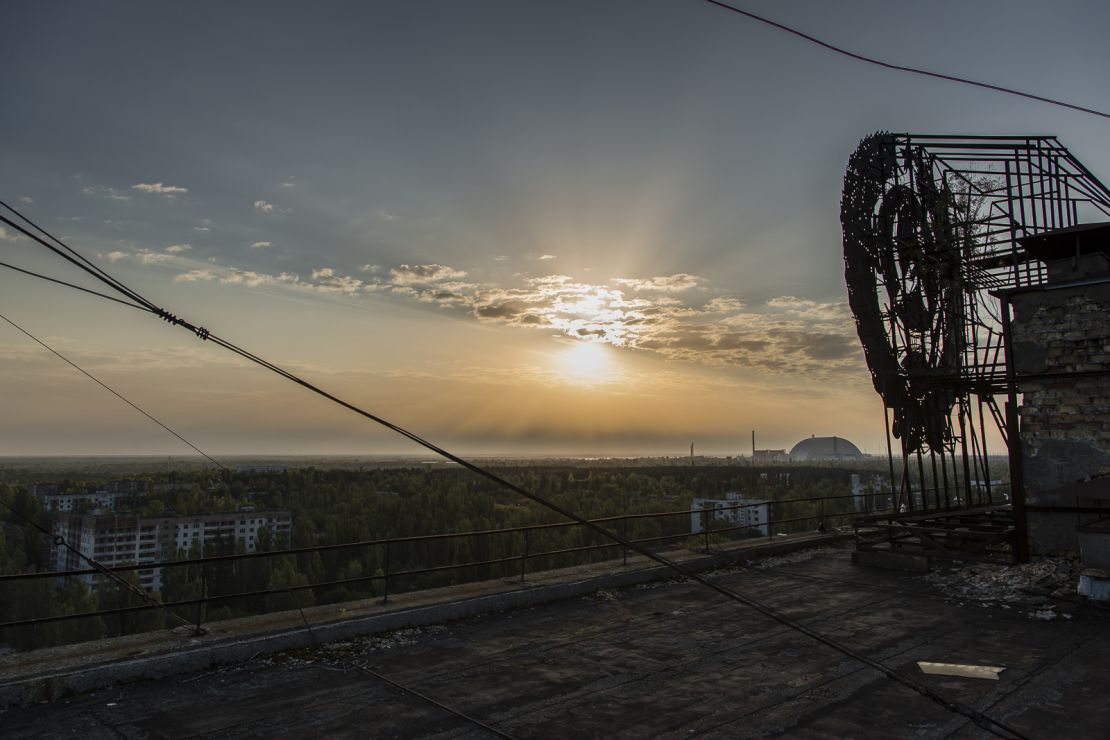
After spending a golden hour on the rooftop, we headed back through the hatch and down the ladder to the stairwell. On our way down the stairs I stopped by some of the apartments. The crumbling furniture and peeling wallpaper tells the sad story of those who where evacuated. They were only told to take what they needed for three days; they were supposed to be allowed to come back. They weren’t though, no one was.
Working in areas like schools or kindergartens can be unpleasantly intrusive. Toys and teddy bears covered in dust makes it easy to imagine how it could have been here some 30 years ago. Some times I find that I can’t even pick up my camera. I just stand there, the emotions rolling over me.
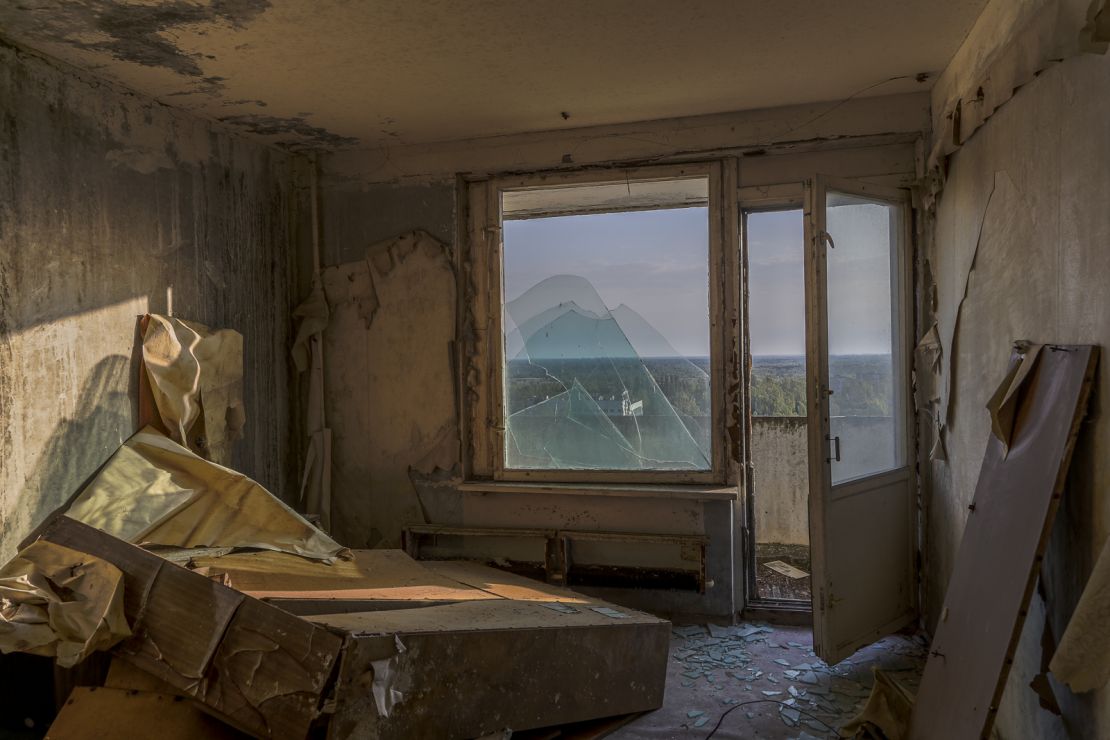
Before going back, we make a short stop at the sarcophagus memorial. The alarm on the Geiger-Müller counter goes off as usual some 200 meters from the sarcophagus. The gamma rays to which my meter is responding are emanating from what once was a nuclear reactor over thirty years ago, but today is just an entombed disaster. The high energy photons have passed several meters of steel, concrete and lead before passing through me and my GM-counter.
When we approach the checkpoint the guard recognizes us and smiles as the car is examined for radiation. Ten minutes later we are sitting at the hotel having breakfast and a well-deserved cup of coffee. After breakfast and toothbrushing, however, we’re off once again for yet another day in the zone.
